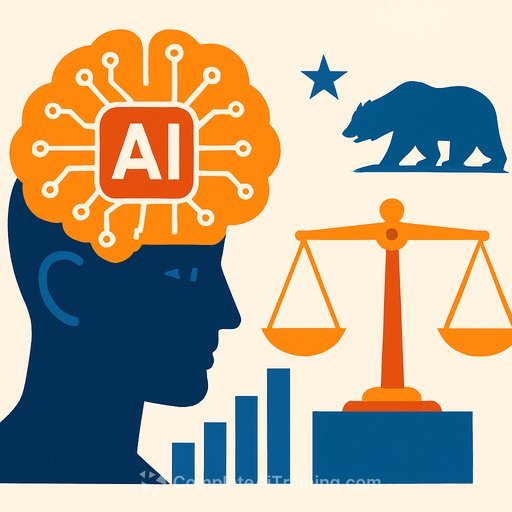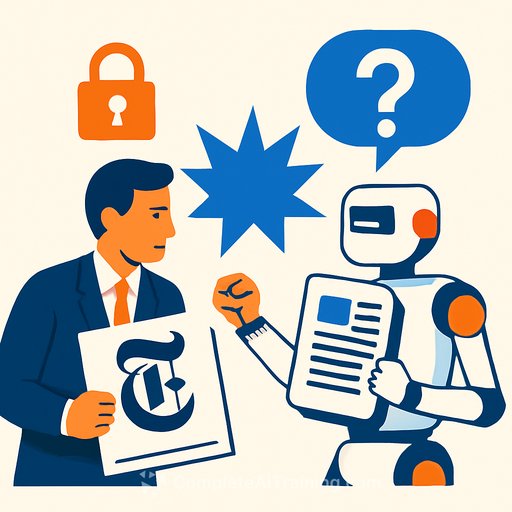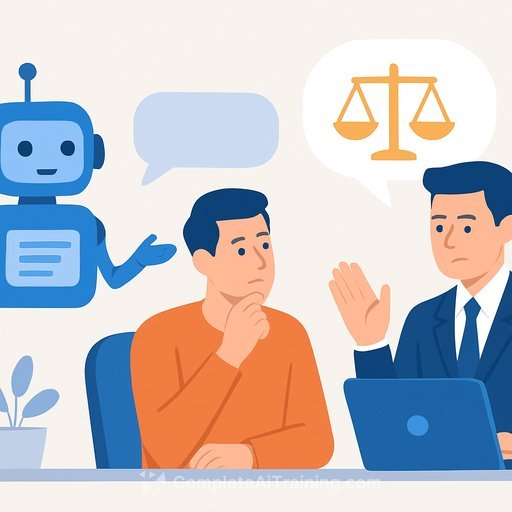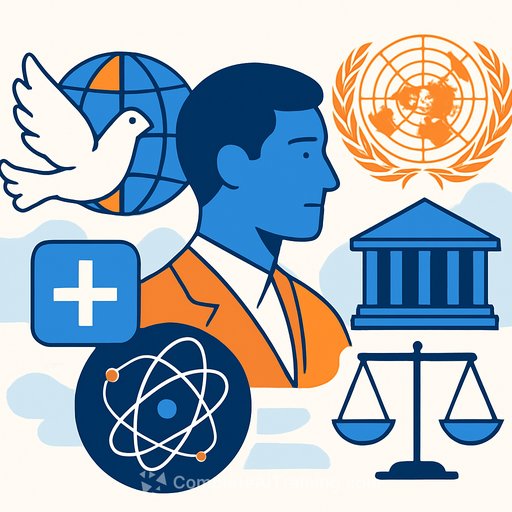AI Can Aid Lawyers and Judges. It Can't Replace Them.
Justice Surya Kant put it plainly at the 29th National Law Conference in Kandy: technology can extend the reach of courts, but justice stays human. He urged the profession to use AI as support, not a substitute, because conscience, compassion, and dignity aren't features you can code.
"Artificial intelligence may assist in researching authorities, generating drafts, or highlighting inconsistencies, but it cannot perceive the tremor in a witness's voice, the anguish behind a petition, or the moral weight of a decision." That's the crux. Tools help. People decide.
What AI Can Do-And What It Can't
- Research and drafting: Faster retrieval, better first drafts, quicker comparisons across cases.
- Error-spotting: Flagging inconsistencies or missing citations with machine precision.
- But not judgment: It can't read a room, weigh credibility, or carry the ethical burden of a ruling.
"The judge's discernment, the advocate's reasoning, the litigant's dignity, and the empathy that animates every fair trial - these are the living fibres of justice that no machine can replicate," Justice Surya Kant said.
India's Digital Push: Access Extended, Accountability Strengthened
India's courts have moved decisively on digitisation: virtual hearings, e-filing, and online dispute resolution now reduce distance and delay. Live streaming in the Supreme Court and High Courts has widened public access and sharpened accountability.
- Virtual hearings and e-filing: Matters move without the drag of geography.
- Online dispute resolution: Faster, lower-friction resolution for suitable disputes.
- Live streaming: A visible bench is a more accountable bench.
- Open judgments: The e-Supreme Court Reports (e-SCR) portal offers free access to judgments, including in 13 Indian languages.
- AI-assisted transcription and translation: Faster access to records in multiple languages.
For a broader view of ongoing court tech initiatives, the e-Committee's updates are useful: eCommittee of the Supreme Court of India.
Data May Inform-But Must Not Dictate
Justice Surya Kant cautioned against blind reliance on models or dashboards. Bias, hallucinations, and brittle outputs can creep in, especially when the system meets messy facts or underrepresented datasets.
- Human oversight is non-negotiable for any AI-assisted step that touches rights, liberty, or reputation.
- Document sources, verify outputs, and keep a human in the loop for final calls.
- Bake in explainability: if you can't explain the basis of a suggestion, it shouldn't drive an outcome.
Confidentiality and Cybersecurity: Treat Trust as Your Core Asset
"Lawyers deal in trust." As workflows digitise, exposure grows: hacking, data leaks, and misuse are practical risks, not hypotheticals. The bar for security must rise with adoption.
- Client-first protocols: Clear data handling and retention policies; strict access controls.
- System hygiene: Encryption in transit and at rest, MFA, device hardening, and regular patching.
- Vendor scrutiny: Contract for audits, breach notification, data residency, and model training restrictions.
- AI usage policy: Define when AI is permitted, how outputs are verified, and what never goes into a model.
Bridge the Digital Divide Inside the Profession
The gap between early adopters and those with limited access or training is real. Without sustained capacity building, tech will widen inequality-within the bar and for litigants.
- Mandatory CLE on legal tech, privacy, and AI risk management.
- Bar-driven helpdesks and toolkits for chambers with lean resources.
- Public-private partnerships to expand infrastructure and training beyond metros.
- Mentorship lanes pairing tech-forward practitioners with those getting started.
If you need structured upskilling paths, explore role-based options: AI courses by job.
Regional Collaboration: A South Asian Legal Tech Consortium
With India and Sri Lanka sharing legal DNA, joint development makes sense. Justice Surya Kant proposed a South Asian consortium of judges, practitioners, academics, and technologists to share tools, methods, and ethics.
- Open-source building blocks for courts and legal aid.
- Multilingual assistance and translation engines to cross language barriers.
- Exchange programmes and labs focused on standards, testing, and deployment.
- Shared research on bias, audit techniques, and governance frameworks.
Practical Next Steps for Courts and Chambers
- Adopt a defined tech stack: e-filing, secure document management, research tools, and ODR where suitable.
- Publish an AI policy: scope of use, barred inputs (client secrets, privileged materials), verification steps, and disclosure norms.
- Run small pilots: Start with research support, transcription, or translation; measure accuracy, time saved, and error rates.
- Create a red team: Periodically test tools for bias, hallucination, data leakage, and adversarial prompts.
- Train for courtroom use: How to cite AI-assisted research, how to disclose, and how to challenge AI-generated evidence.
- Secure the perimeter: MFA, role-based access, logging, and incident response drills with counsel and IT at one table.
- Invest in people: Continuous training for judges, registries, and bar members; fund practical workshops in district courts.
The Principle to Keep
"We are not replacing the lawyer or the judge; we are simply augmenting their reach and refining their capacity to serve. Let technology be the guide, and the human govern."
Justice is-and must remain-a human enterprise. Use the tools. Keep the judgment human.
Your membership also unlocks:






